Life in a wooded environment improves the wellness of the body and spirit. People sleep more soundly, for example, and breathe fresher air. The reverse side of the coin, though, is that it’s quite tricky to enjoy live TV programs In most remote locations.
In case you live in a distant, wooded place, TV programs may be difficult to pass through to your antenna. But by getting the best antenna for the wooded area, you have a sturdy launching pad. By all means, check out our guide to discover which is the top indoor antenna for a wooded area, in order to get the most immersive TV experience possible.
On that note, what are the all-time top antennas for a wooded area?
Best Antenna for Wooded Area Reviews
Antennas Direct DB8e – the best overall
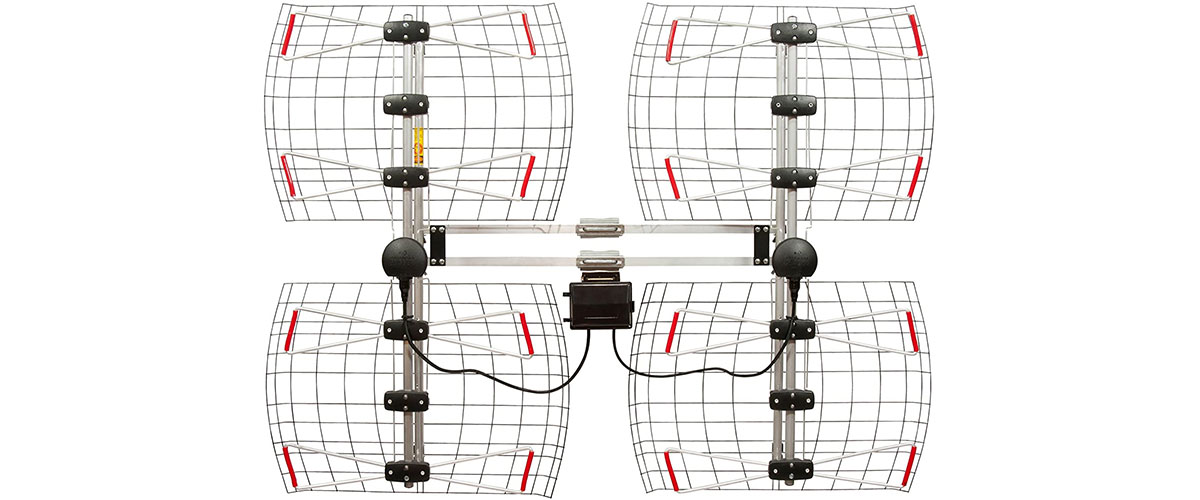
Antennas Direct DB8e is the best TV antenna for rural wooded areas, designed to receive medium to extra-low TV signals. The inventive, uncommon look is the outcome of the form of the antenna installation: it is known in common parlance as a fly antenna, in which each pair looks like a fly. The basic concept is that the antenna is suitable for receiving signals over a range of frequencies.
The antenna is made for the reception of UHF television broadcasting stations, which can account for the majority of broadcasting signals throughout main city environments. It is loaded with world-class signal intensifiers in its mount. Thanks to this antenna, you may watch all your preferred channels in HD quality instead of signing up for a subscription with a cable provider.
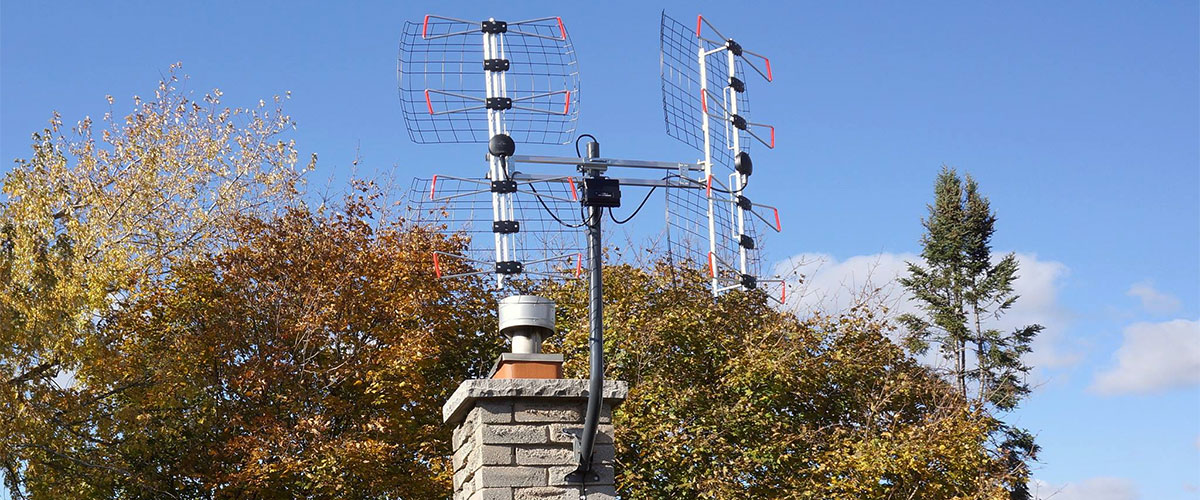
It is a reflective array antenna that includes proprietary parts and flexible holders that let you turn the plates in two ways. The supplied reflector can increase the transmission range by 70+ miles and offer external noise protection.
The DB8e actually handles the task nicely and is a consideration for everyone who is in an isolated area with weak signals. The possibility of aiming the separate arrays in multiple directions is beneficial when getting signals from several markets, but also lowers the level of the signal.
Specifications
- Style: multi-directional
- Range, miles: 70+
- Frequency range, MHz: 470 – 608
- Received band: UHF, VHF
Pros
- Strong receipt of low-level signals
- The antennas could be set in two possible directions
- Simple to attach
Cons
- Large proportions need a solid holder
- Cannot be used for receiving VHF TV stations
Five Star FSA-3806 – best budget
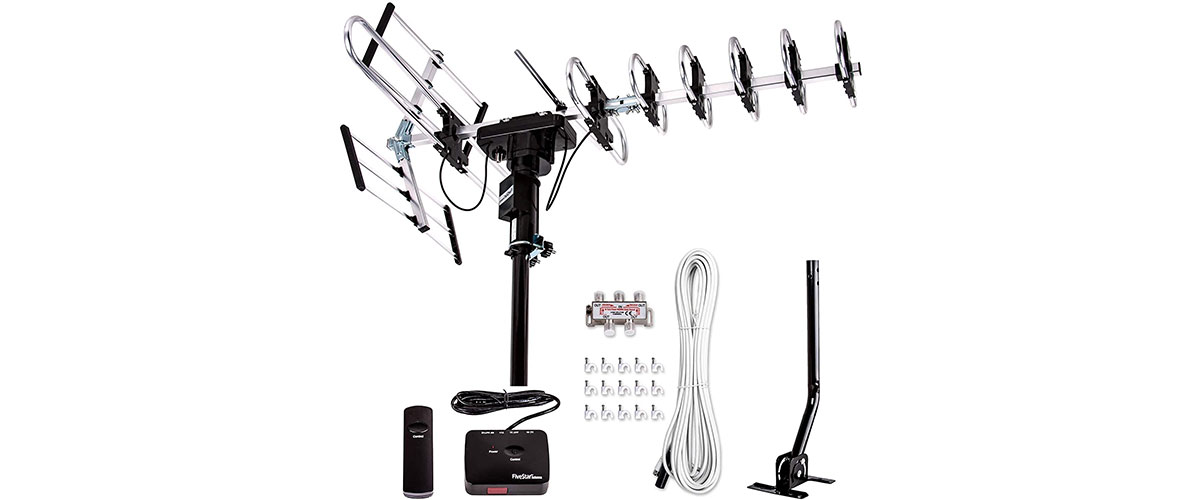
The FiveStar FSA-3806 HD best reasonably priced TV antenna for forest regions sure will inspire you. It comes with all that you need to get the most out of your favorite channels free of charge. Continue reading to know more about it.
Get 200+ channels using this product free of subscription charges. And think of it, the signal coverage is powerful enough to allow you to connect easily to stations 200 miles away. Therefore, if you own a ranch or homestead on the periphery of civilization, this unit allows you to get the digital experience in your home.
But what we enjoyed about the unit was its compact form factor and its user-friendliness. Being under 5 pounds, this is one of the most lightweight items around. The assembly is likewise straightforward since everything essential is supplied in the box.
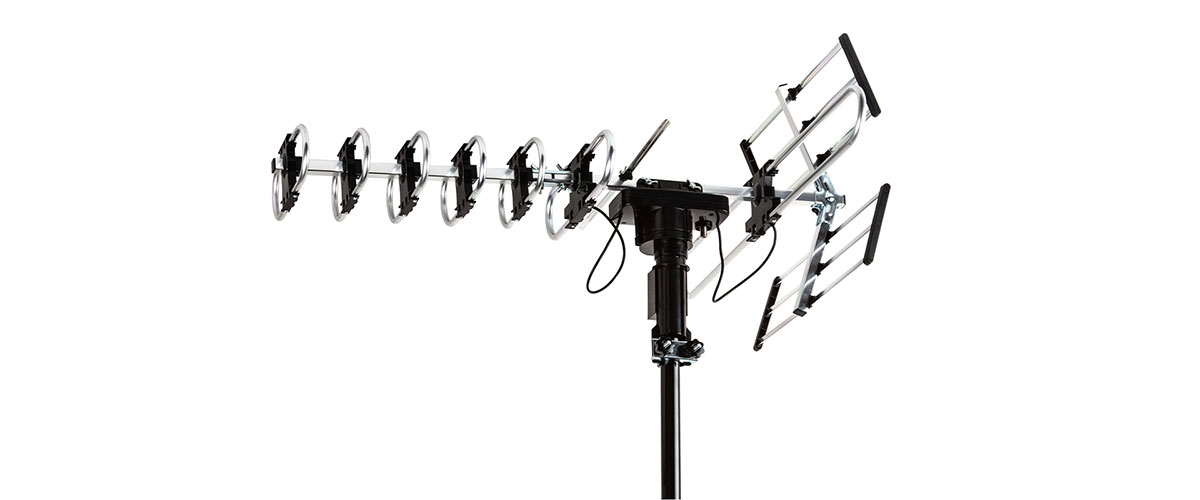
Furthermore, the FM panels are 50% greater in size and feature a 25% broader reflective field. These two factors combined add up to increased coverage. Like the UHF units, there is no degradation in image quality or clarity, enabling you to enjoy HD viewing every time.
Really great item at a decent price. I am really happy with this amazing antenna and it will save you a high monthly expense on cable bills. Overall, the positive points of this item are the ease of use, excellent coverage, and affordable cost. I strongly recommend it!
Specifications
- Style: multi-directional
- Range, miles: 200
- Frequency range, MHz: 45-860
- Received band: DTV, VHF, UHF
Pros
- 50% bigger VHF units for superior signal reception
- High-grade copper cable
- Unique windproof construction
- 25% greater reflected surface area
Cons
- Possibly unable to endure harsh weather elements
Antennas Direct Clearstream 4Max – also a good choice
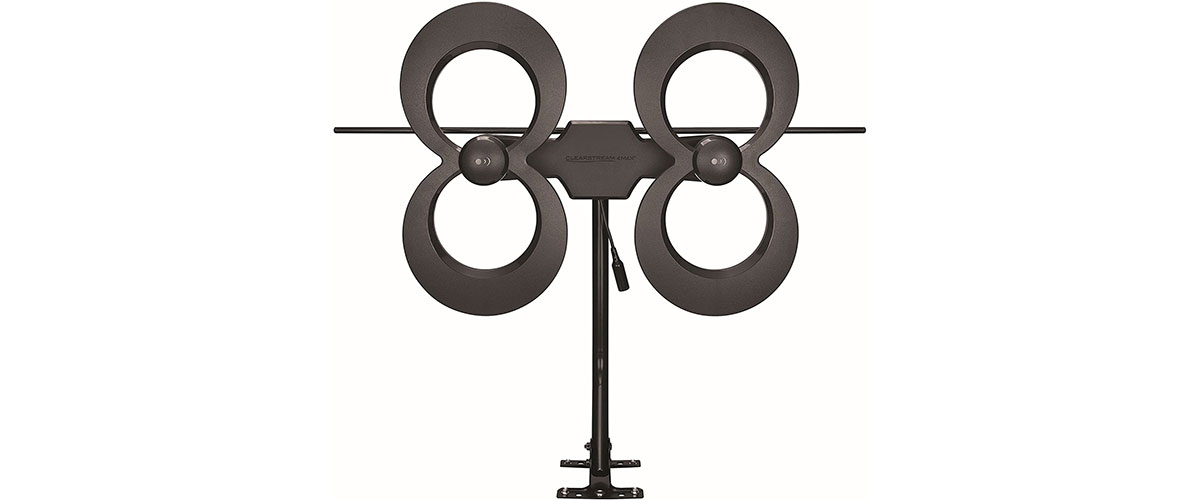
Allow me to explain the effectiveness of using only one antenna for a heavily wooded area to handle each TV set within your home, first of all. You only have to plug the antenna to the cable TV line which connects all the cable TVs within your home, and voila! Expect to enjoy working channels in any room!
Multi-directional antennas work well for covering isolated spots, too. Being far away from cities can pose a significant concern for network troubles, yet with this unit, there is no reason to be concerned about that.
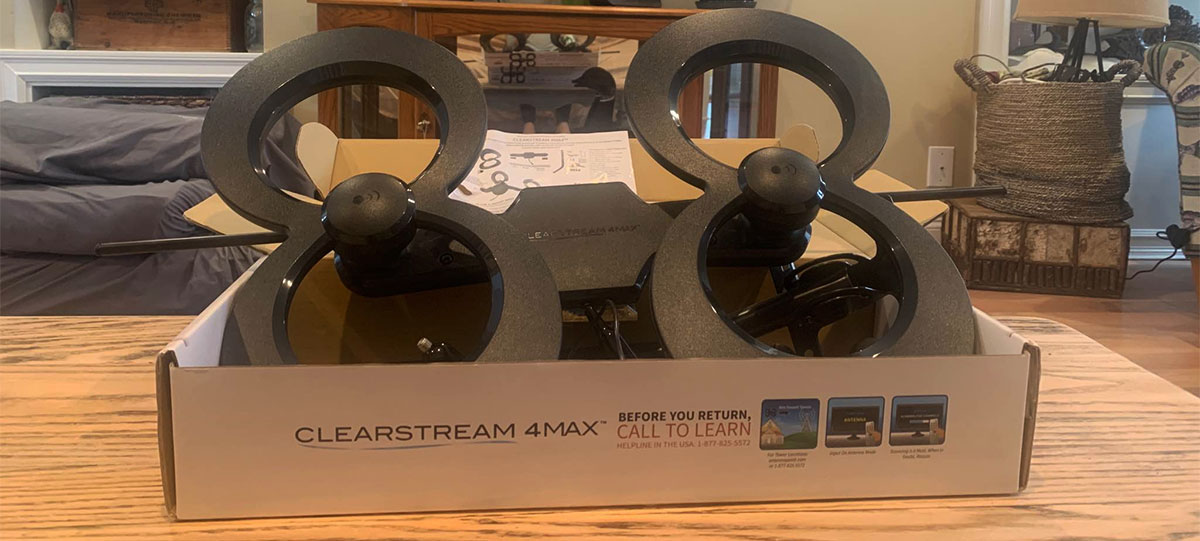
Its 70-mile radius means it’s perfect for remote countryside locations or high-roofed houses. While these are prone to losing out on signal quality, this unit is fully competent to deliver HD channels thanks to its Clear Stream 4 quad-loop design.
However, what’s the stunning thing about this? It means you’ll be able to watch them in full HD every time you wish!
To prevent tedious experimentation when buying antennas, all you have to do is grab this one, aim it in a suitable way, do a channel search, and everything should work out fine.
Specifications
- Style: multi-directional
- Range, miles: 70+
- Frequency range, MHz: 174 – 216/470 – 608
- Received band: UHF, VHF
Pros
- Suitable for suburban zones
- Multi-directional parts
- Comes equipped with a 20-inch mounting base
Cons
- Loose wing nuts
ANTOP AT-415B
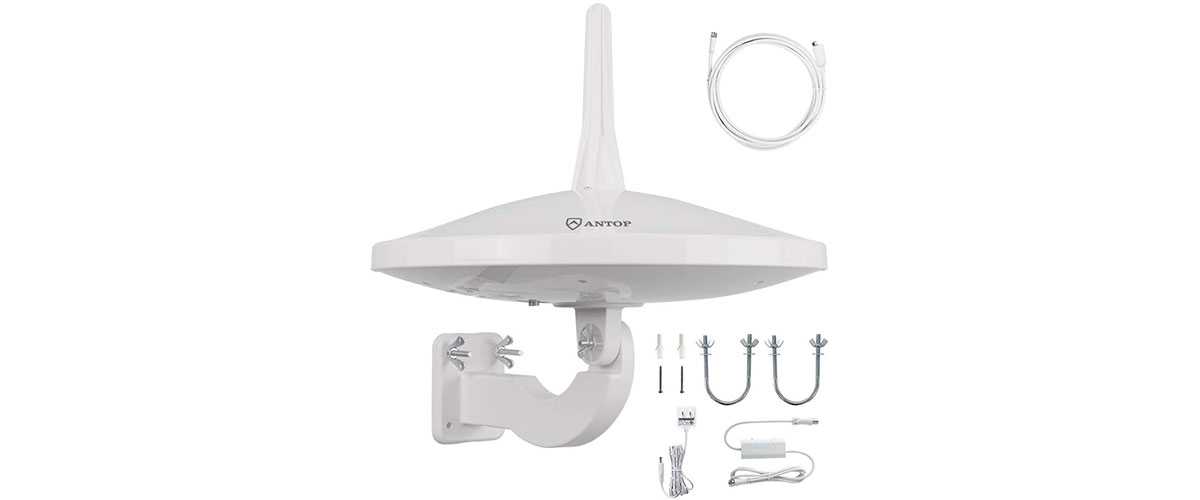
This updated omnidirectional long-range outdoor TV antenna from ANTOP is unrivaled. In addition, this magnificent outdoor TV antenna works great for your home, mobile home, or even your attic. Its multifunctional properties turn this antenna into one of the greatest.
Similar to the stock antenna, this one also comes with a 720-degree area of coverage. This allows it to catch signals from farther away without you aligning it.
Offering 360-degree vertical and horizontal coverage, it is capable of transmitting HD UHF and VHF channels. Get no extra antenna, only this one! Get full HD channels with 720p, 1080i and 1080p reception possibilities.
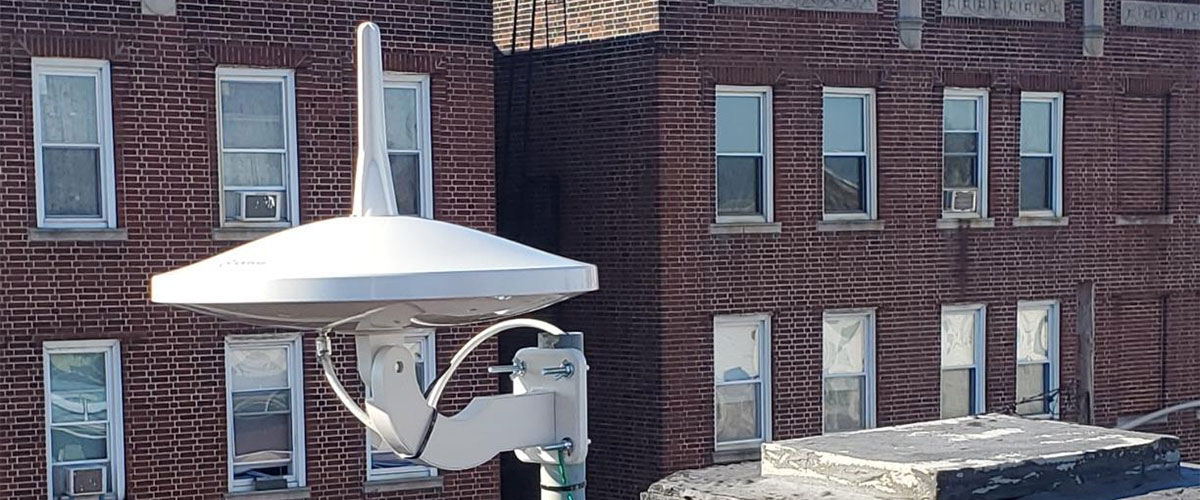
The tools-free nature of the product’s design means it sets up in just 5 to 10 minutes. The unmatched and streamlined “UFO” shape enables enhanced, streamlined signal coverage that demands minimal assembly area.
Extra smart-pass enhancers allow adjustment for close- and far-field signal identification. A smart switch is also included to avoid signal noise.
This unit is absolutely undefeatable. Set up has never been so simple. Get 60+ channels. Crystal clear signal coverage from ABC, CBS, FOX, NBC, PBS, and a full array of channels. This device catches them all! No need to set it up high or angle it in any certain direction.
Specifications
- Style: multi-directional
- Range, miles: 55-65
- Frequency range, MHz: 87-230/470-790
- Received band: HI-V, UHF
Pros
- Full HD support
- Blocks unwanted 3G and 4G signals
- Provides really solid coverage
Cons
- Low range, regardless of power
Vansky – the cheapest
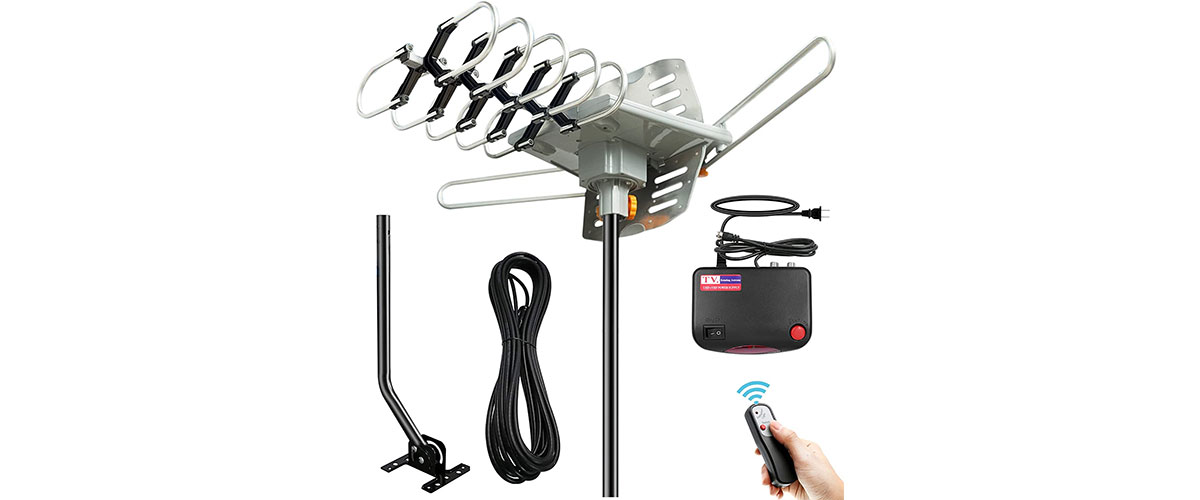
Our next suggestion for the day is a super-affordable high-tech antenna from Vansky. It is definitely considered one of the prime options out there due to its competitive cost and other incredible functions. It gives you the chance to access a full lineup of high-definition stations while avoiding the hassle of paying additional funds for satellite or cable on a monthly basis.
Along the same lines as other units, it comes with omnidirectional broadcast distribution coverage, providing you with access to a bunch of channels and content. It will just need a moment to set up the product and be able to pick up the incoming signals. It also comes with a power supply, wireless controller, and coaxial cord for easy installation.
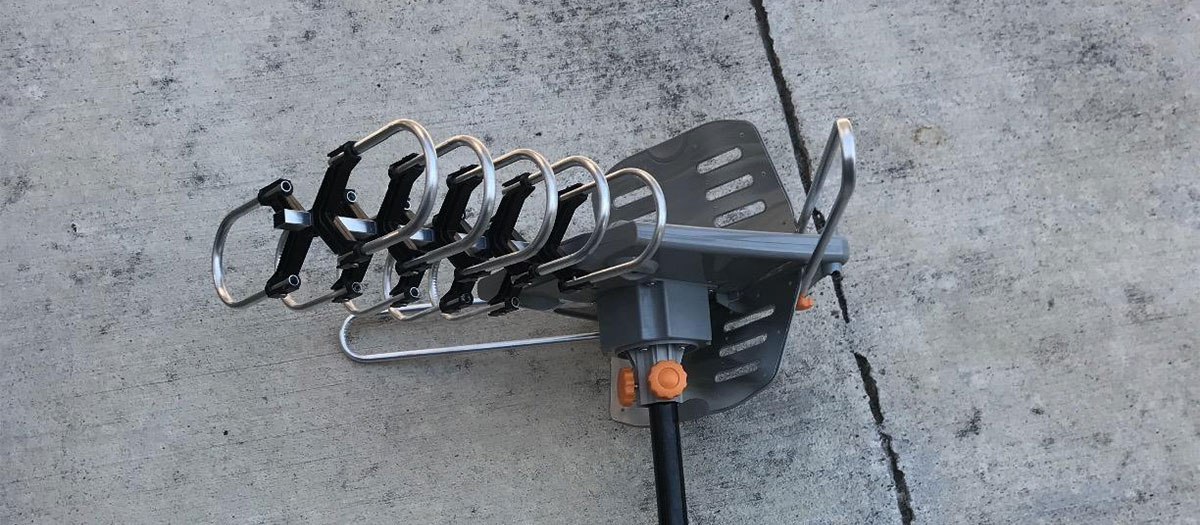
The weather-resistant nature of the device’s construction makes it ready for use outdoors, and it will operate for many years without any issues. A built-in ultra-low-noise enhancer further aids in a smoother sound and video performance.
It is rated to run 2 TVs at the same time and picks up VHF as well as UHF TV signals. It is simple to install and delivers you a 1080p HD image of the best quality.
What is the reason to buy this HD TV antenna? A remarkable 150 miles of reception range for the best HD streams, including 1080p, 1080i, 720p, 32dB high-gain signal reception, and more. All in all, the Vansky Outdoor OTA Amplified HDTV Antenna is without question one of the most affordable units available.
Specifications
- Style: multi-directional
- Range, miles: 150
- Frequency range, MHz: 0-300/470-890
- Received band: UHF, VHF
Pros
- Supplied with coaxial cable, power adapter, and wireless remote control.
- Weatherproof design for use in outdoor environments
- Ultra low-noise booster to enhance the quality
- Two TV devices are able to run simultaneously
- Wide range coverage in 150 miles
Cons
- The rotor components may fail quickly
TV antenna for rural wooded area buying guide
Wooded antenna types
There are three main types of wooded antennas- Yagi, log periodic, and triangular. Yagi antennas are best used when you need to target a specific direction, while log periodic antennas provide better coverage over a wider range. Triangular antennas are smaller and more discreet than the other two types, making them ideal for use in tight spaces. All three of these types can be mounted on a mast or tower, or on the side of a building.
Antennas working frequency
TV antennas communicate with televisions by transmitting radio signals in the VHF and UHF frequency ranges. These signals are sent out over the air, and your TV antenna captures them to create the picture you see on your screen. The two main frequency ranges used for broadcasting television are VHF (Very High Frequency) and UHF (Ultra High Frequency).
VHF frequencies range from 2 to 12 MHz, while UHF frequencies go from 21 to 69 MHz. The majority of channels in most markets are broadcast in VHF, with a few UHF channels mixed in. In general, the lower the frequency, the longer the wavelength.
TV antennas are designed to receive both types of signals, but they work best with signals in their respective ranges. If you live in a rural area, you may need to use an outdoor antenna to pick up all the available channels. But if you live in a city or suburban setting, using an indoor antenna will likely be sufficient for getting most of your local channels.
Coverage ranges
TV antennas can have a coverage range of up to 50 miles. The further away you are from the broadcast tower, the weaker the signal will be. You may need to install an outdoor antenna if you live too far away from the tower. It is also important to note that the channel number you get when installing an antenna will depend on where you live. If you live in a rural area, you may need to search for channels on lower frequencies as they are more likely to be available.
Antennas materials
TV antennas are made out of a variety of materials, but the most common type is an aluminum alloy. This material allows the antenna to be lightweight and durable, while also being resistant to corrosion. Other materials that are commonly used for TV antennas include stainless steel, brass, and copper.
Each of these materials has different properties that make them suitable for use in an antenna. For example, copper is a good conductor of electricity and radio waves, so it works well for transmitting signals.
Stainless steel is very strong and durable, making it ideal for use in an antenna that will be exposed to the elements. Brass is also a good conductor of electricity and radio waves, but it is not as strong as stainless steel. As a result, brass antennas are often used in applications where they will not be subject to heavy wear and tear.
FAQ
Will a TV antenna work in a wooded area?
A TV antenna will work in a wooded area as long as there is an open space where the antenna can be placed to get reception. The taller the trees, the less likely reception will be good.
How can I get antenna signals from trees?
You can’t get antenna signals from trees. Trees are made of materials that don’t allow electromagnetic waves to pass through them.
How can I get antenna signals from trees?
One way to improve TV reception in heavily wooded areas is to install an outdoor antenna. Another way to improve reception is by using a signal amplifier.
Do trees interfere with TV signals?
There is no definitive answer to this question as it depends on a variety of factors, including the size and type of tree, the location of the tree, and the strength of the TV signal. However, in general, trees will not interfere with TV signals unless they are very large and directly in front of the TV antenna. In such cases, the signal may be blocked or reduced. If you are experiencing interference from trees, try moving your TV antenna to a different location in order to get a better signal. You may also want to trim any nearby trees if necessary in order to improve reception.
How high does my TV antenna need to be?
The further away you are from the TV broadcast towers, the higher your antenna will need to be. The height of the antenna also depends on the size and shape of the antenna. Generally, antennas should be at least 30 feet high. Some antennas may require you to be up to 100 feet high or more.
Where should I put my outdoor TV antenna?
The best place to put your outdoor TV antenna is on the roof.
